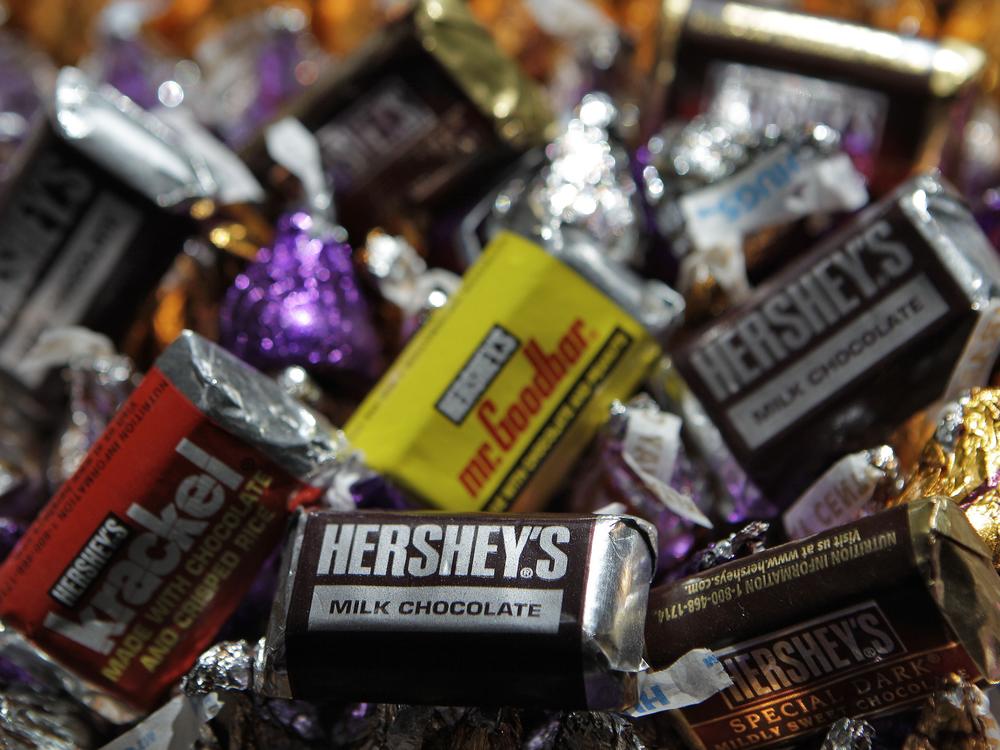Section Branding
Header Content
Why you’re seeing scary-high chocolate candy prices this Halloween
Primary Content
As cocoa prices continue to spike, shoppers see the jump-scare prices for chocolate candy at the grocery store this Halloween season.
A streak of poor crop seasons has reduced the supply of the key ingredient in chocolate bars, driving up the price for chocolate and confectionery manufacturing from cocoa by 45% from January through September, according to the producer price index.
Chocolate manufacturers pass off the high costs to consumers, scaring shoppers off KitKats and M&Ms.
In the past year, dollar sales for chocolate candies rose 1.5%, driven by inflation and rising shelf prices, according to a report this month from the National Confectioners Association. But, faced with costly chocolate, people are cutting back on M&Ms and Hershey’s bars: The number of chocolate candy units sold over the same period dropped almost 5%.
Why the high chocolate prices?
The cost of cocoa hit a 47-year-record high in February but has been increasing for more than a year.
The high cocoa prices stem from volatile weather conditions in the world's top cocoa-producing regions, particularly the Ivory Coast and Ghana.
A heavy rainy season caused disease to hit last year’s crops in West Africa. Warm, dry temperatures and El Niño winds damaged this year’s harvest.
According to a recent report from the Wells Fargo Agri-Food Institute, next year will mark the third consecutive year with failed cocoa harvests.
As a potential future-proofing measure, farmers have increased cocoa tree plantings in the African region and South American countries, where orchards have been more productive. However, cocoa trees take at least a few years to produce.
Chocolate makers expand their palates
Chocolate manufacturers will likely feel the pain for some time, which means chocolate candy prices will also stay high for a while.
“As we extend into Christmas, it's looking pretty rough for chocolate manufacturers when it comes to those cocoa prices,” said Billy Roberts, a senior economist for food and beverage at CoBank's Knowledge Exchange research division.
Barring a dramatic turnaround in the chocolate market, he said it’s tough to see things turning around in time for Valentine's Day.
Dan Sadler, principal of client insights at Circana, told Reuters that consumers are cutting back when faced with costly chocolate.
"Chocolate candy, there’s just not as many items per retailer on shelf," he said. “We’re seeing double-digit increases in non-chocolate items.”
After months of disappointing chocolate sales, chocolate candy manufacturers have begun diversifying their offerings, expanding their selection of sweeter, gummy and sour treats.
Pennsylvania-based company Hershey, for example, recently introduced Jolly Rancher Ropes and Shaq-a-Licious gummies, inspired by the retired basketball star, with plans to roll out more non-chocolate sweets in the coming months.

